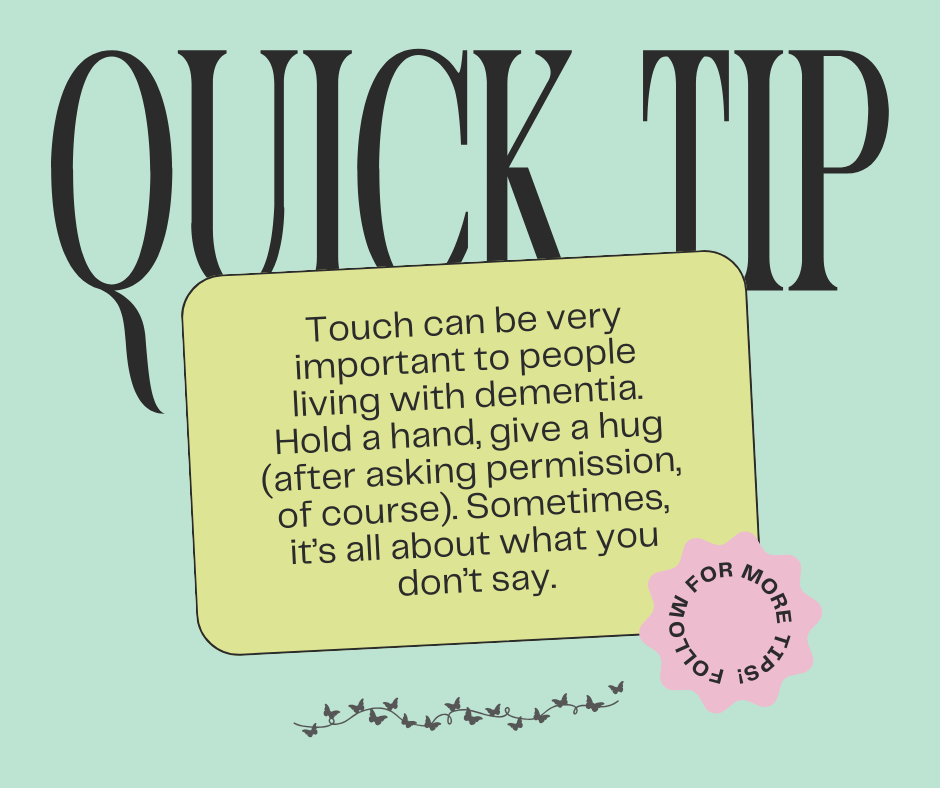Quick Tip: Hold a Hand

My mother went nonverbal pretty early in her Alzheimer’s journey, which meant much of the time I was with her, I either held a conversation with myself or said nothing. Sometimes we’d walk down the hallway, hand in hand, and I would point out the window at the end. We’d look at the trees, the cars in the parking lot, the people in the field. I’d chatter about what the kids were doing, and Mom would nod her head, a small smile on her face. Other times, Mom slept, and I read a book or wrote or graded, looking up from time to time and placing a hand on her forearm. And at the end of her life, especially during those first harrowing hours in the hospital, I kept my warm fingers on her. If nothing else, I wanted Mom to know I was there, and skin-to-skin contact seemed like the best idea.
Touch is huge with dementia patients. It’s a way of communicating without talking. Many of the folks in the facility my dad lives in can’t find the words to express what they want or need, but a gentle squeeze of their hand or a light arm around their shoulder often elicits a smile and sigh of relief. One resident, Ruthie, always reaches a hand out to me when I visit, and if I had the time, she’d probably keep me there all day. Even my dad—who was never demonstrative—reaches out for me at least a couple of times a week. “We don’t need to talk,” he’ll say, “I just want to know you’re here.”
Be sure you ask permission before touching anyone, but know that your touch can truly make the difference to someone. Sometimes, it’s all about what you don’t say.
